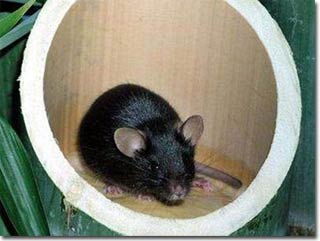Paralysis due to spinal injury can still recover itself
When the spinal cord is damaged, they block signals directly from the brain and cause paralysis. A new study has found that brain and spinal cord can reorganize function after spinal cord nerve damage.
A spinal cord injury - for example, from a car accident - can cause paralysis of the underlying parts of the injury. Many scientists have been frustrated by failures in finding treatments for patients who are paralyzed because of such injuries.
Recently, an American research group found that when the spinal cord is damaged, the signals are directly killed from the brain, but the message can still circulate around the injury. This is the hope of finding ways to treat paralyzed patients with spinal injuries.
A new hope
Scientists have figured out how rats can stand again after being damaged by the spine. Thereby, they hope to find a way to help patients paralyzed due to similar injuries. The results of this study have just been published in Nature Medicine , showing that the brain and spinal cord can reorganize function after spinal cord nerve damage. The communications needed to help the travel function have been restored at the cellular level.

Scientists have found a mechanism to help mice recover their walking ability.This is hope for paralyzed patients.(Photo: Reuters)
The same brain and spine undergo a self-rewriting program that controls the ability to move even the lack of central nerve damage connecting the brain to the control center that moves below the spine."This is not the end of the story. It is just the beginning," said the chair of the study. Michael Sofroniew, professor of plant neurology at David Geffen School of Medicine - University of California, Los Angeles, said.
According to the researchers, in the laboratory, the nerves that hurt the nerves gradually pass through the 8-10 week period and begin to be able to walk, though not as good as before the injury.
He said they have identified mechanisms of self-healing after nerve damage that scientists had not previously discovered. The research team needs to continue to study and learn how to best exploit these mechanisms, through rehab training and how to stimulate self-recovery.
" Loop " mechanism
Spinal cord injuries impede the path used by the brain to convey information to motor neurons that control movement. Many experts have thought and figured out how to re-develop the central nervous system from the brain to the last spinal cord.
The new finding, mentioned above, is that when damaged spinal cord blocks signals directly from the brain, messages can still circulate around the vulnerability. So, instead of using a long central nerve fiber, the messages were transmitted through a series of shorter connections to bring commands from the brain to the feet, helping the legs move.
The research team locked half of the central nerve fiber on each side of the spinal cord, but still did not affect the center. This is a place where a series of shorter nerve fibers concentrate on short distances, up and down in the spinal cord. Then, they obstruct those short roads, which causes paralysis.
The research results show that the nervous system sends messages from the brain to the spinal cord using those short pathways.
Currently, the team hopes they find ways to stimulate nerve cells in the spinal cord to develop and form new pathways through or around the lesion, conveying information directed from the brain to the body. reception of cells to help paralyzed patients recover.
Sand incense
- Restored in mice and will soon be tested on humans
- Chinese breakthrough treatment of spinal cord injury
- New hope for people with spinal cord injuries
- Medical breakthrough: For the first time, paralysis patients can walk
- Can treat hand paralysis
- Wheelchair control wheel
- Can treat paralysis with light
- Racing car for people with spinal paralysis
- New method to treat spinal cord injury
- First aid for people with spinal injuries
- The lower body still loves
- Cure spinal cord injury with stem cells from teeth
 Green tea cleans teeth better than mouthwash?
Green tea cleans teeth better than mouthwash? Death kiss: This is why you should not let anyone kiss your baby's lips
Death kiss: This is why you should not let anyone kiss your baby's lips What is salmonellosis?
What is salmonellosis? Caution should be exercised when using aloe vera through eating and drinking
Caution should be exercised when using aloe vera through eating and drinking